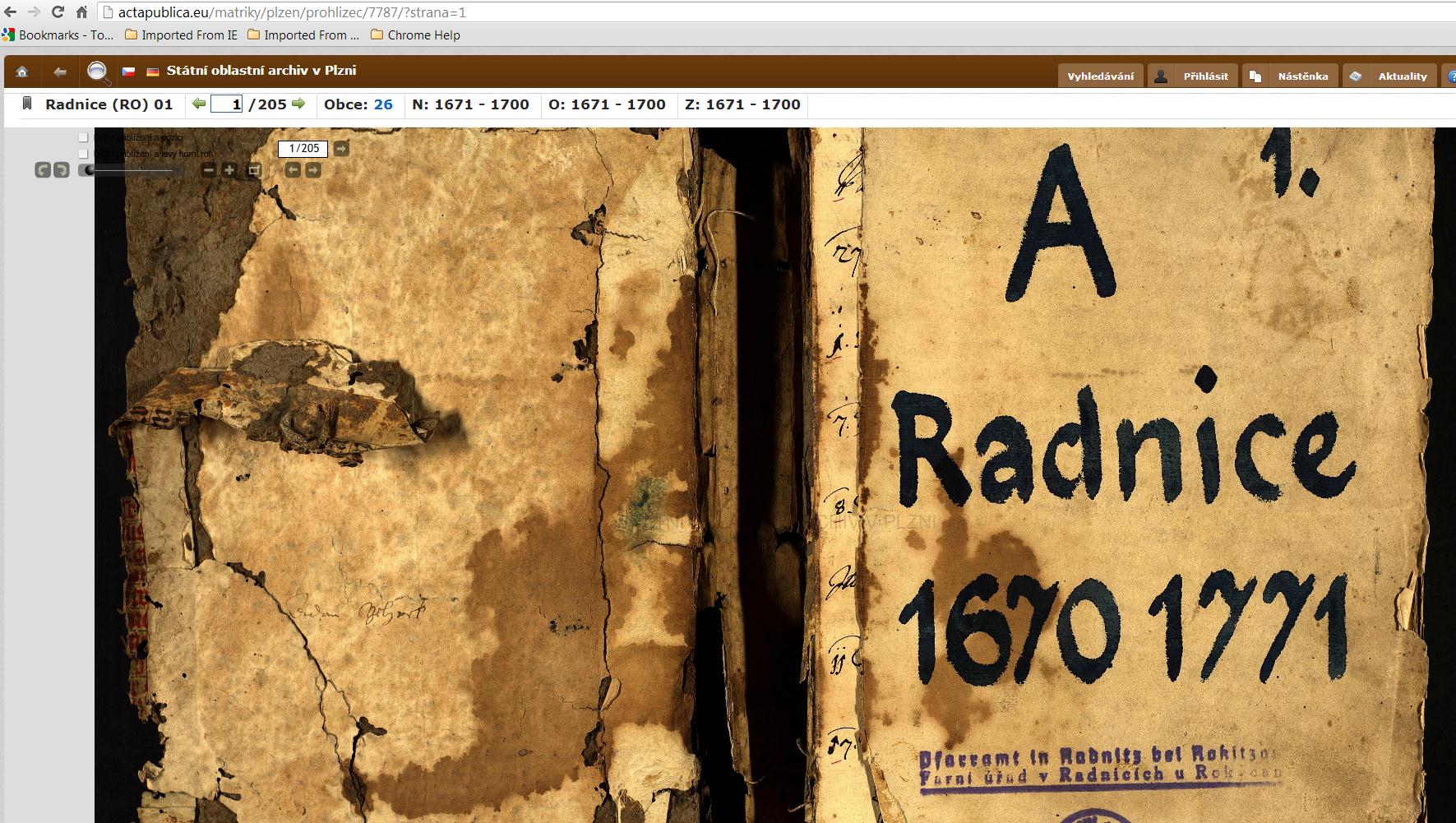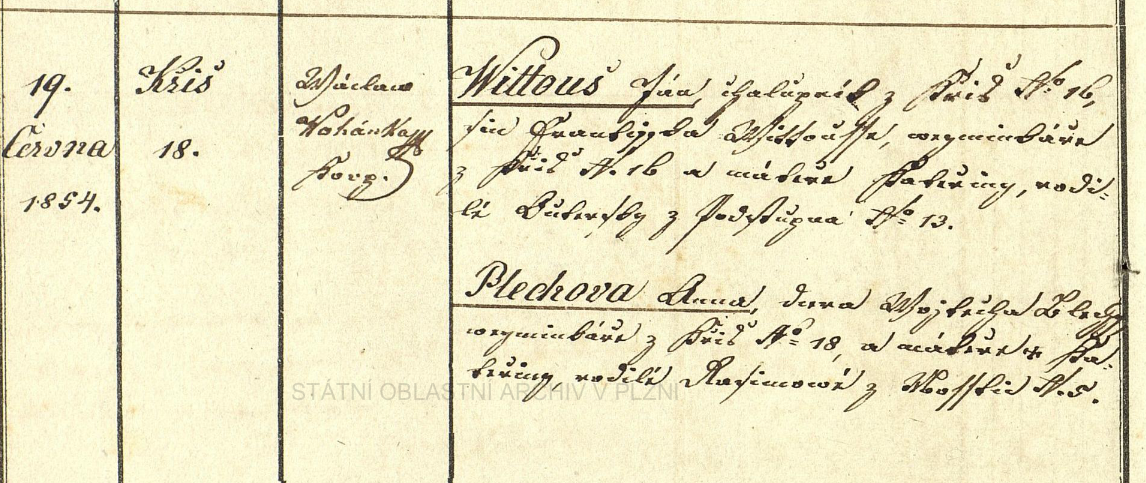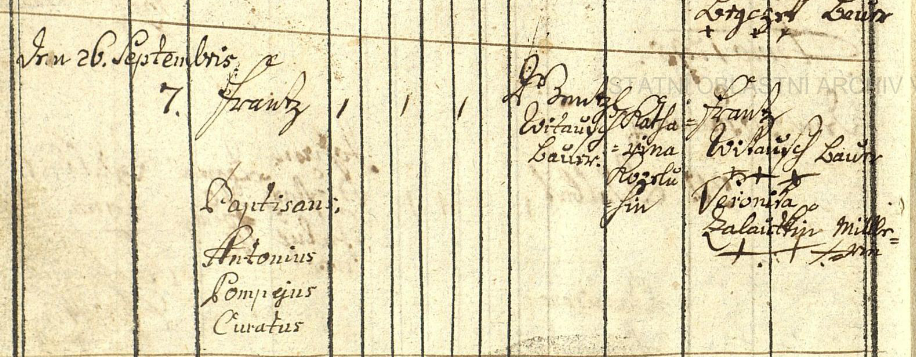BY
MAURICE
L. VITOSH
HUNTLEY,
IL
The Vitosh
family dates back to the 1600’s in the Village of Stupno
in the land of Bohemia. The oldest known ancestor is Jan Witauss
born in about 1650 in the Kingdom
of Bohemia.
The
Kingdom of Bohemia was a part of the Holy
Roman Empire until its dissolution in 1806, whereupon it
became part
of the Austrian Empire, and subsequently the Austro -Hungarian
Empire in 1867. Following the
defeat of the German army and their allies in World
War I,
both the Kingdom and Empire were dissolved and Bohemia became the major
part of
the newly formed Czechoslovak.
From 1918 to 1939 and from 1945 to 1992 the
land of Bohemia was part of Czechoslovakia.
In 1993, Czechoslovakia was split into the Czech Republic and
the Slovak
Republic during the Velvet Revolution. Today
the land of Bohemia is part of the Czech
Republic
.
My grandfather Joseph Vitosh was born in the
Kingdom of Bohemia in 1866. The Emperor of the Austrian Empire at that
time was
Franz
Joseph born near Vienna, Austria in 1830. Franz Joseph was two years older than my
great grandfather Jan Krtitel Vitous
who was born in1832 in the village of Ujezd u Svateho Krize near
Stupno. Jan
and Anna Blecha Vitous
immigrated to the United States in 1867 just as Kingdom of Bohemia was
becoming
a part of the Austro-Hungarian Empire.
When great grandfather Jan Vitoush
filed his
Naturalization
papers
to become a citizen of the U.S in Iowa City, IA in 1878, he was
required to
denounce his allegiance to the Franz Joseph the Emperor of Austria.
In searching the family tree, I
have
found many different spelling of our name.
In 1650 the name was Witaus. In the Czech Church records, I have seen the
name spelled, Witaus, Witauss,
Wittause, Wittaus,
Witous, Wittous,
Witausch, Vitaus,
Vitauss, Vittaus,
Vitous, Vitouse
and there may be other spellings as well.
Some of this confusion comes from the fact that the church
records were
written in Czech, German or Latin. The
surnames that start with a “W” are more like the German
spelling. The names that start with a
“V” are most
likely Czech. Often the priest who wrote
in the church book used the language he was most familiar with and
spelled the
name the way he thought was correct. The
other problem may be in reading or interpreting the hand written script. Many times the writing was not legible. Sometimes an extra “s” or
“t” was added to
the name.
A
similar kind of thing has happened
to the first names of my ancestors. The
name Czech name for Vaclav can
be Wenceslaus (Latin) or Wenzel which is
German. The English
translation of Vaclav maybe James or Jacob.
I have tried to make it
easier for you by giving you some links to specific records. Let me warn you that loading these record
images goes through a six-step process. The progress is monitored in the middle of
the screen, as you will see “1/6” and then
“2/6” until it is fully loaded. I
have heard that for some people this takes
a very long time, but my experience is that the images load for me in
well
under a minute.
Here is the image of John
Vitosh’s wedding in 1854. (click on the Link to see the original record)
At the bottom left hand
corner of the page, you should see this image.
The writing is in Czech. The
wedding took place June (červen) 19, 1854
in Krise
The name is Jan Wittous and Anna Blechova. The
wedding took place in the Krise # 18 home
of Anna’s parents Vojtech
and Anna Blecha.
The hand writing is very good but I cannot read the small script. I have had help in reading these
records from a distant relative of mine who lives in Germany.




